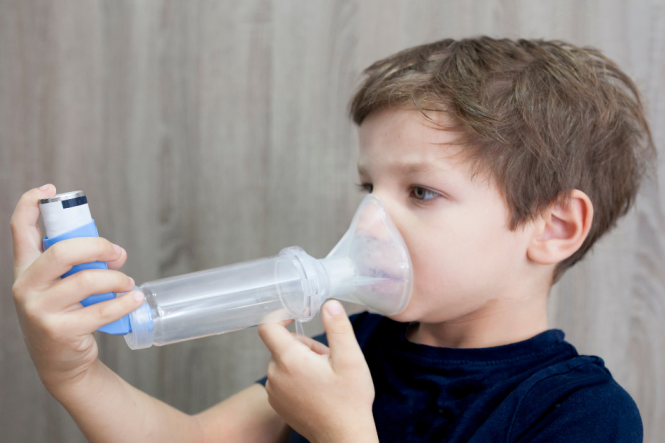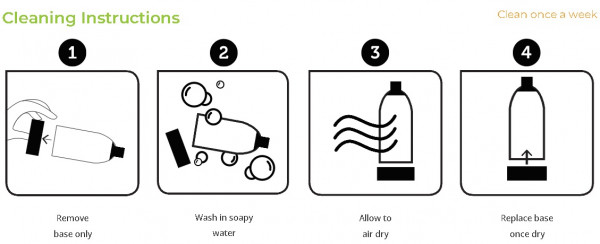Wishing everyone a safe and happy Christmas and New Year – Meri Kirihimete from the Healthify team.
Spacers for inhalers
Key points about spacers for inhalers
- A spacer is a plastic tube designed to make a metered dose inhaler easier to use.
- They make your inhaled medicine twice as effective.
- Read about spacer devices and how to use them.

A spacer is a clear plastic tube with a mouthpiece or mask at one end and a hole for your inhaler at the other.
A spacer is attached to the end of your inhaler to make your MDI (metered dose inhaler) easier to use. It also makes the medicine in the inhaler more effective, because more of it can get into your lungs.
Spacers are suitable for people of all ages and for all types of metered dose inhalers such as preventers, relievers, symptom controllers or combination medicines.
Spacers are available free of charge from your doctor or respiratory educator. They’re also available from most healthcare providers but there may be a cost.
In Aotearoa New Zealand spacers are also called e-chamber® or Volumatic®.
Advantages of using a spacer
A spacer is a chamber that holds the medicine before you inhale, giving you a more controlled, deeper inhalation. This can be especially helpful if you’re short of breath.
- It makes it easier to use your MDI (metered dose inhaler): Many people are unable to use their MDI properly because you need good coordination to press the inhaler and inhale at the same time. The spacer reduces the need for perfect timing. A spacer allows you to press the inhaler and then inhale at a steady pace, making it easier to use.
- It gets more medicine to your lungs: Compared to using your MDI without a spacer, using a spacer delivers much more medicine (up to twice as much) to your lungs where it’s needed. Less medicine ends up in your mouth and throat.
- It reduces your risk of side effects: When less medicine is left in your mouth and throat, it reduces the side effects of hoarseness or voice changes and thrush in your mouth from the medicine.
- Spacers with masks can help very young children inhale their medicine.
Studies have shown that spacers can work just as well as nebulisers, even for flare-ups. A spacer is smaller, and more convenient than a nebuliser.
Before using a spacer for the first time
Some spacers need to be ‘primed’ before you use them because of the type of material they’re made from. Check the instructions that come with your spacer or ask your healthcare provider.
e-chamber® spacers are made from anti-static material so don’t need to be primed.
Volumatic® spacers need to be ‘primed’ by washing in warm water with dishwashing liquid. Don’t rinse or dry with a towel, drip (air) dry. This reduces the electrostatic charge so that the medicine doesn't stick to the spacer sides.
How to use your spacer
If you're not sure about how to use your spacer, ask your healthcare provider.

Image credit: eChamber spacer information(external link)
The following steps are a guide.
- Remove the cap and shake the inhaler. Fit the inhaler into the spacer opening (opposite the mouthpiece).
- Put the spacer into your mouth ensuring that there are no gaps around the mouthpiece. Press the inhaler once only – put 1 puff at a time into the spacer.
- Breathe in slowly and deeply through the spacer mouthpiece and hold your breath for 5 to 10 seconds
OR take 2 to 6 normal breaths, keeping the spacer in your mouth all of the time. You can breathe in and out with the spacer still in your mouth as most spacers have small vents to allow your breath to escape rather than going into the spacer. - If you need more than 1 dose of medicine, wait a minute and then repeat these steps for further doses making sure that you shake your inhaler between doses.
- Wash your spacer once a week with warm water and dishwashing liquid. Don’t rinse or dry with a towel. Drip (air) dry. This reduces the electrostatic charge so that the medicine doesn't stick to the spacer sides.
- Check for cracks. If used regularly your spacer may need to be replaced every 6 –12 months.
Video: How to use your spacer device
(Healthify He Puna Waiora, NZ and Auckland District Health Board, 2018)
Video: How to use a MDI and spacer
(Asthma Waikato, NZ, 2018)

Image credit: Canva
If you’re using a mask together with a spacer for your child, place the mask on your child’s face, making sure the mask covers their mouth and nose completely, without any openings.
A mask is used for babies and infants who can't seal their lips around the mouthpiece. Most children should be able to use the spacer without a mask by the age of 4 years.
If you’re using a mask with preventer medicine wash your child’s face after use.
Wash your spacer once a week with warm water and dishwashing liquid. Don’t rinse or dry with a towel. Drip (air) dry. This reduces the electrostatic charge so that the medicine doesn't stick to the spacer sides.
Check your spacer for cracks. If used regularly your spacer may need to replaced every 6-12 months.

Image credit: eChamber spacer information(external link)
The following links provide further information on spacers.
eChamber spacer information(external link) Apex Medical
What is a spacer?(external link) Asthma + Respiratory Foundation, NZ
Brochures
Medicines and side effects (external link)Healthify He Puna Waiora, NZ, 2024
5 questions to ask about your medications(external link) Health Quality and Safety Commission, NZ, 2019 English(external link), te reo Māori(external link)
References
- Drug delivery devices(external link) New Zealand Formulary, NZ
- Understanding your inhaler(external link) Spacers (page 8) Asthma Foundation NZ
- Spacers for asthma inhalers(external link) KidsHealth, NZ, 2023
- Asthma education in primary care(external link) BPAC, NZ, 2015
- Pharmacological management of asthma in children aged 5–11 years(external link) BPAC, NZ, 2020
Brochures

Medicines and side effects
Healthify He Puna Waiora, NZ, 2024

Health Quality and Safety Commission, NZ, 2019 English, te reo Māori
Credits: Healthify He Puna Waiora editorial team. Healthify is brought to you by Health Navigator Charitable Trust.
Reviewed by: Stephanie Yee, Pharmacist, Auckland.
Last reviewed:





